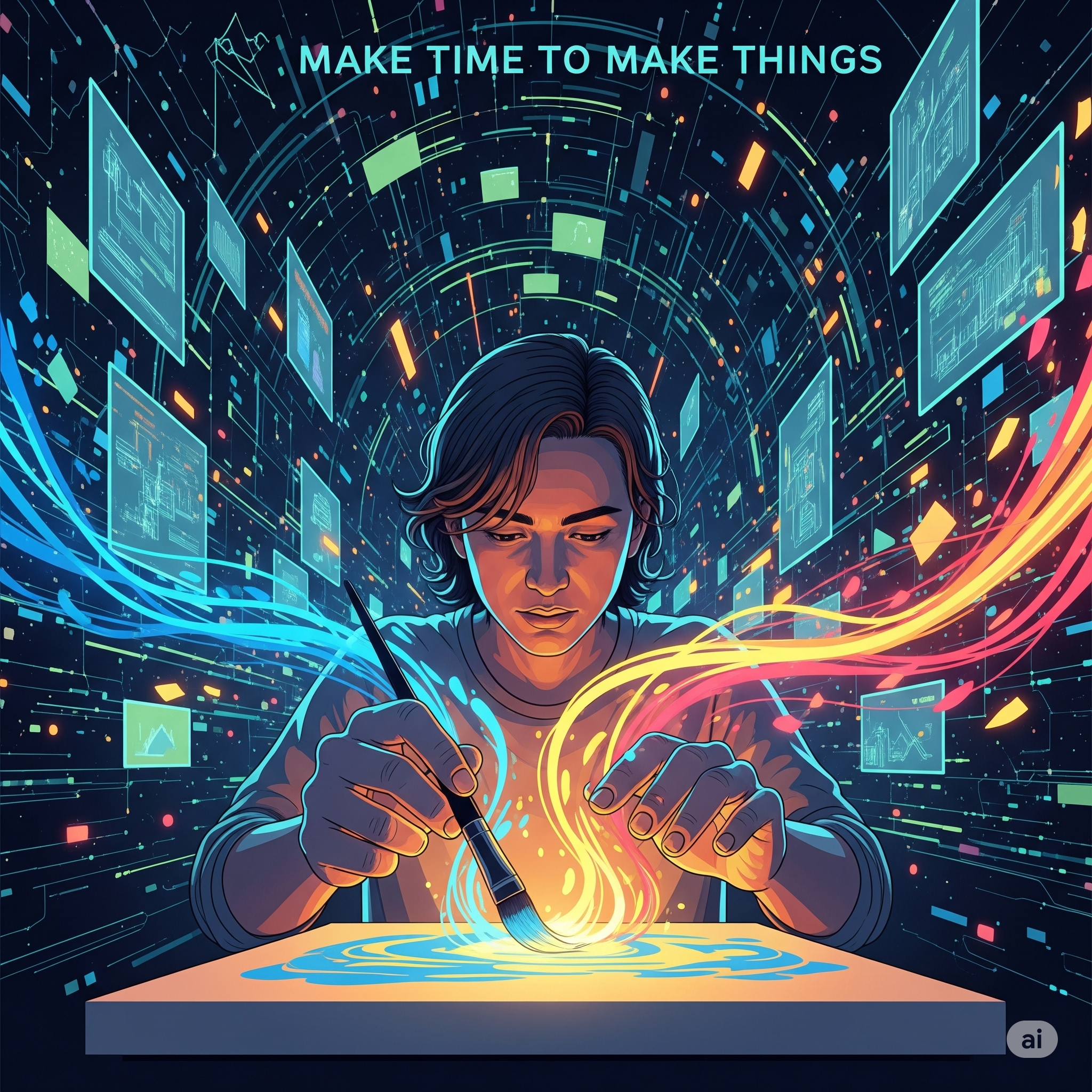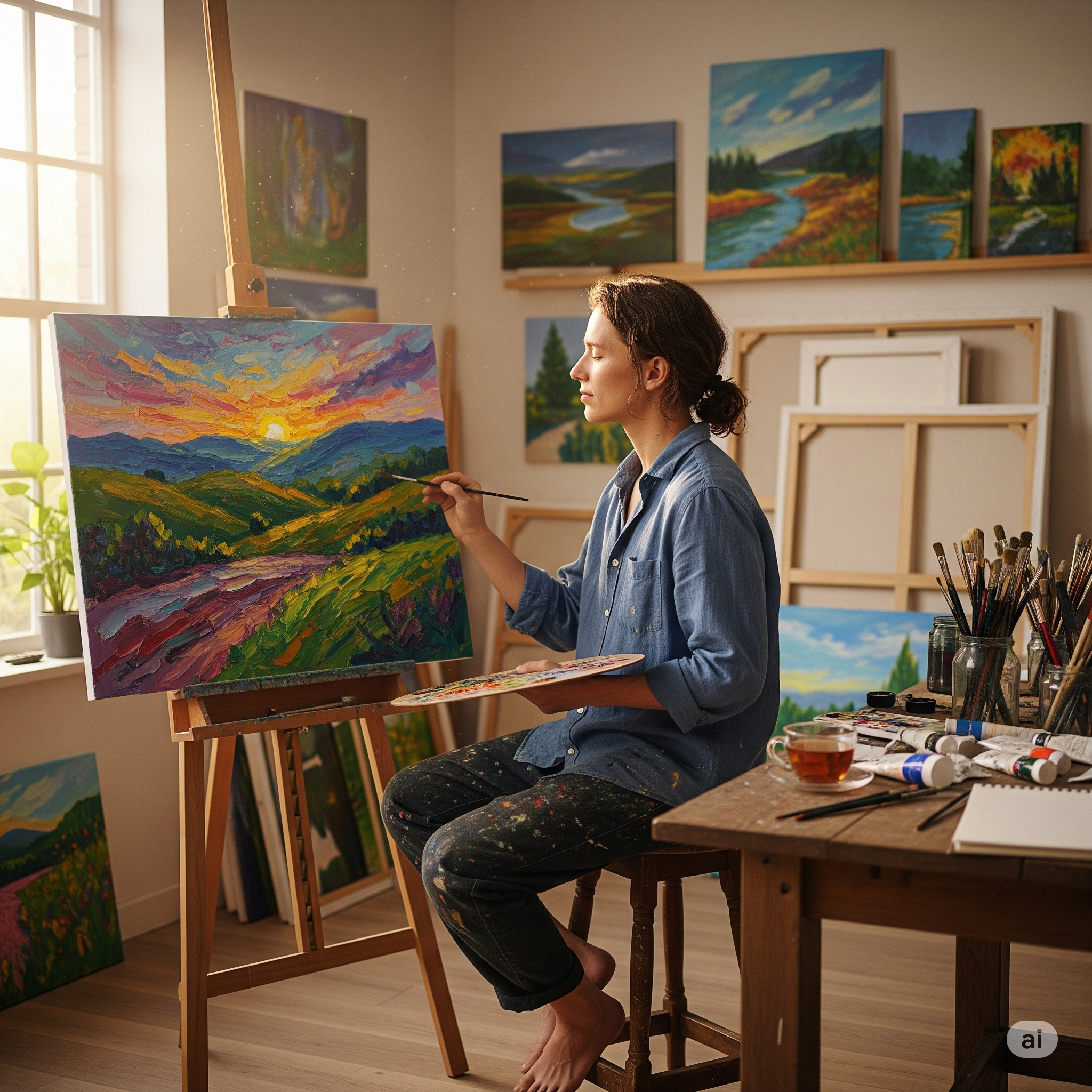Table of Contents
- Introduction: The Creative Impulse in a Distracted World
- The Modern-Day Challenge to Creativity
- Defining “Making Things”: It’s for Everyone
- Part 1: The Psychology of Creation
- The Science of “Flow State” and Its Impact on Well-being
- Creativity as a Form of Self-Care and Mindfulness
- Case Study: How a Local Community in Hasilpur, Punjab, Pakistan Found a Sense of Purpose Through a Collaborative Art Project
- Part 2: Why Creativity Matters Now More Than Ever
- In a World of Automation: The Uniquely Human Advantage
- The Link Between Creativity and Problem-Solving in Life and Work
- Creativity as a Tool for Emotional Resilience
- Part 3: Overcoming the Obstacles to Making
- Tackling the “I’m Not Creative” Myth
- Finding the Time: Practical Strategies for a Busy Life
- The Tyranny of Perfectionism: Embracing the Messy Process
- Part 4: Getting Started: Your Creative Practice
- Step 1: The “Small Habits” Approach
- Step 2: Curating Your Creative Space
- Step 3: The Power of Community and Sharing Your Work
- Frequently Asked Questions (FAQ)
- Conclusion: The Call to Create
Article Blueprint & Content Strategy
Introduction: The Creative Impulse in a Distracted World
Talking Points:
- Start with a relatable scenario: feeling overwhelmed by digital noise, social media scrolling, and a sense of passive consumption.
- Introduce the core argument: in this age of distraction, actively making things is a revolutionary act.
- Broadly define “making things” to include not just traditional arts (painting, music) but anything that involves conscious creation—writing code, gardening, cooking a new recipe, or building a piece of furniture. This inclusivity makes the topic accessible to a wide audience.
LSI Keywords to Weave In: creative expression, mental health, digital detox, passion projects, purposeful living.
Image Alt Tag: [A collage of various hands working on different creative projects: pottery, coding, and writing]
Part 1: The Psychology of Creation
Talking Points:
- Explore the science behind the “flow state” (as coined by Mihaly Csikszentmihalyi). Explain how being fully immersed in a creative task reduces stress, boosts happiness, and improves overall cognitive function.
- Position creativity as a form of self-care, similar to meditation or exercise. It provides an escape from a racing mind and allows for a focused, mindful experience.
- Case Study: Highlight a local community project in Hasilpur, Punjab, Pakistan, where a group of people came together to create something—perhaps a community garden, a shared mural, or a storytelling circle. Focus on the psychological benefits they experienced: a stronger sense of community, reduced stress, and newfound purpose. This grounds the article in a unique, local context.
External Link Suggestion: A link to a reputable psychological journal or a well-regarded mental health organization discussing the benefits of creativity.
Part 2: Why Creativity Matters Now More Than Ever
Talking Points:
- Discuss the impact of automation and AI on the workforce. Argue that uniquely human skills, like creative problem-solving and original thought, are becoming more valuable, not less.
- Showcase how creative thinking, regardless of the medium, enhances our ability to solve problems in all areas of life, from fixing a household problem to navigating a career challenge.
- Frame creativity as a tool for emotional resilience. Explain how having a creative outlet helps us process difficult emotions, provides a sense of control, and builds confidence in our ability to overcome challenges.
LSI Keywords: creative problem-solving, emotional resilience, human ingenuity, future of work, critical thinking.
Part 3: Overcoming the Obstacles to Making
Talking Points:
- Tackle the “I’m not creative” myth head-on. Reassure the reader that creativity isn’t an innate talent but a skill that can be developed.
- Offer concrete, practical advice for finding the time in a busy life. Suggest a “creativity audit” of their schedule and techniques like time blocking and setting aside a “non-negotiable” creative hour each week.
- Address perfectionism and the fear of failure. Explain the concept of a “first draft” and why the process of creation is more important than the finished product.
Internal Link Suggestion: A link to a blog post on productivity hacks or time management strategies, if available.
Part 4: Getting Started: Your Creative Practice
Talking Points:
- Provide a numbered, actionable list to help readers start their creative journey.
- Step 1: The “Small Habits” Approach. Encourage starting with just 10-15 minutes a day. Use an example like a “daily doodle” or a “one-paragraph journal entry.”
- Step 2: Curating Your Creative Space. Explain the importance of having a dedicated area, no matter how small, that signals to your brain that it’s time to be creative.
- Step 3: The Power of Community. Advise readers to join online forums, local workshops, or informal groups to share their work and get feedback.
Frequently Asked Questions (FAQ)
- 1. Do I need expensive tools or materials to be creative? (Answer should emphasize that creativity is not about the tools but about the intention.)
- 2. What if my creative work isn’t “good”? (Answer should focus on the internal benefits of the process, not the external validation.)
- 3. How can I stay motivated to keep creating? (Answer should suggest linking the creative practice to personal goals and celebrating small wins.)
- 4. Can creativity help with anxiety or depression? (Answer should explain the positive psychological benefits but also emphasize that it’s not a substitute for professional help.)
- 5. What is the link between digital distraction and a lack of creativity? (Answer should explain how constant consumption diminishes our capacity for original thought.)
- 6. What if I feel stuck and have no new ideas? (Answer should offer tips for overcoming creative block.)
- 7. How can I balance a creative practice with my career? (Answer should suggest integrating creativity into work or using it as a separate outlet for stress relief.)
- 8. Are some people just naturally more creative than others? (Answer should debunk this myth and reframe creativity as a muscle.)
- 9. What are some easy, low-commitment creative activities to start with? (Answer should provide a bulleted list of ideas like sketching, cooking, or journaling.)
- 10. How can I make time for creativity if I have children or family commitments? (Answer should offer practical tips for weaving creativity into family life.)
Conclusion: The Call to Create
Talking Points:
- Summarize the article’s main points: the psychological benefits of creativity, its growing importance in modern life, and the practical steps to overcome obstacles.
- Reiterate that making time to make things is a powerful act of self-care and a way to reclaim purpose and joy in a chaotic world.
- End with an inspiring call to action, encouraging the reader to take a small, immediate step to begin their creative journey.




